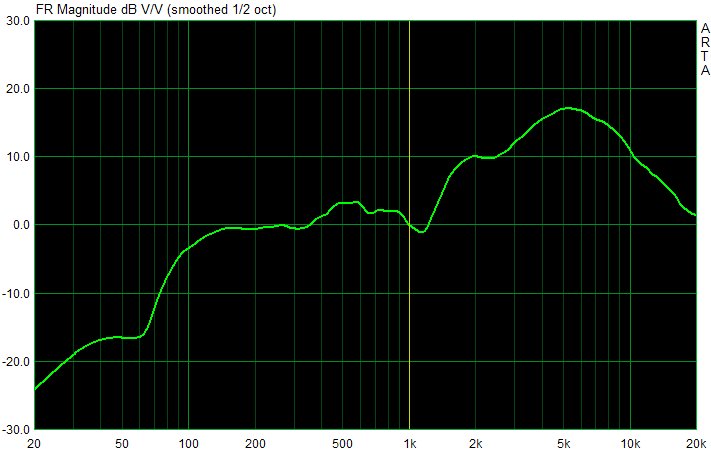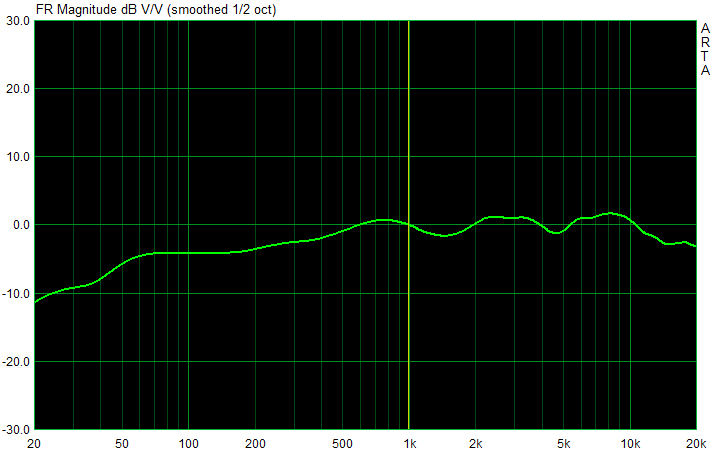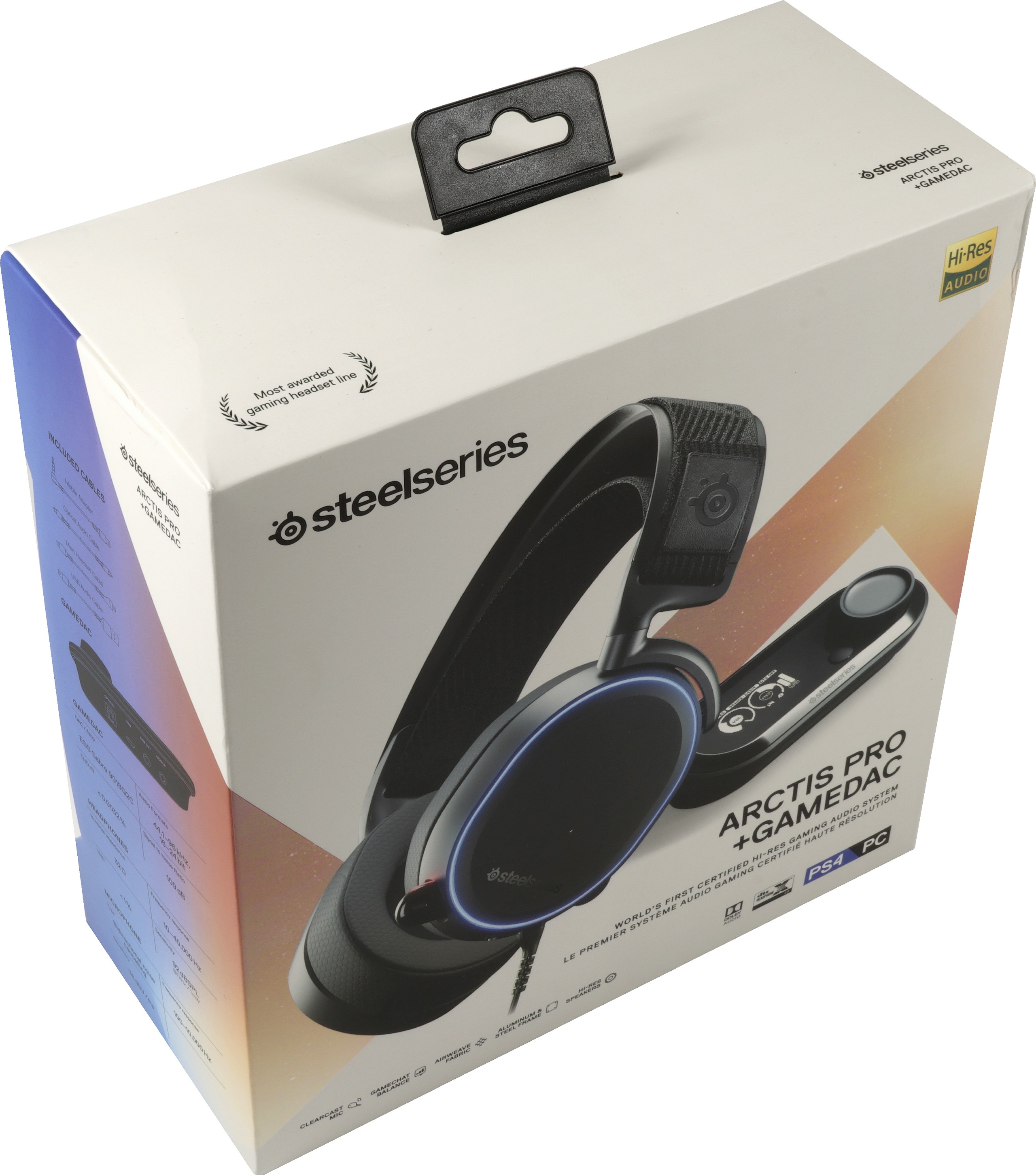Microphone measurement and sound check
First of all, we can also measure the frequency range of the microphone to accommodate the feedback of the readers. For this we use our measuring room again, but we virtually reverse the process. Of course, a true reciprocity calibration as a starting point exceeds our current possibilities and the effort far exceeds the benefits. That is why we have sought a compromise.
However, since we have a calibrated measuring microphone, a comparison measurement and the calculation of the differences can at least produce a curve that is easily usable for our purpose. So it is not the exact frequency response of the microphone, we would not presume that, but a meaningful approximation, which also underpins our subjective impression.
Measuring and audible, it can be seen that it is under approx. 100 Hz gives a kind of low-cut. This is also important, because rumbling can still be avoided in an acceptable way. The speech intelligibility is good to very good, the level is sufficiently high. Here you should still make a slight level increase in the GameDAC if necessary.

What sounds a little pointed are Sibilants or Hissing, because the tweetism is relatively dominant. The sound, on the other hand, is more likely to be described as cool. You may like it, but there is a bit of plenty and warmth below the upper middle.
Headphone measurement
As we test, we have already explained in the basic article "Gaming Headsets: Myth, Truth and How we Test" very detailed and transparent, because with the usual audio-swirl of bass thunderstorms and high-pitched whips you can't really get any further. You have to be able to listen subjectively well and measure at the same time. Let us start with the latter.
If you look at the original curve, it actually looks really good. Both in the lower and upper boundary ranges you can see that the frequencies of our desire are still present there in decent levels. We deliberately did not record the upper limit of 44 KHz, because you measure crap quickly, especially with semi-professional equipment. So anything else, just not what matters. Especially since, as we all know, we are not bats either. The 44 KHz awarded are therefore rather hypothetical in nature and fabric for the PR sewing box.

We also play something with the low bass by lifting it. This is really good for the sound experience, as long as you don't overdo it. But more on that.
Subjective listening experience
Let's also test subjectively what you have on your ear. We used to operate the headset continuously for four days with a jack cable at a source with a decent level and suitable material to give the one-game fanatics a chance. You want to be safe and pea counters are always there and everywhere.
Bass
Test the lowest bass in the subcontraoctave (16.4 Hz to 32.7 Hz) with a recording of Bach's Toccata and Fugue in D minor (19 and 25 Hz) and the Festival Overture 1812 by Tchaikovsky (10 Hz and 12.5 Hz). The same applies to the lower ranges of the contraoctothe (32.7 to 65.4 Hz). The big bass drum (kick drum), which in the U-music is a welcome companion and usually on approx. 55 to 60 Hz, this assessment will then be rounded off.
The bass is in the original grotto-deep and almost black, but also a little restrained and very dependent on the correct fit of the ear pads. It also gains transparency and clarity if the ear cups are not pressed too much. Thus, the lack of compatibility of the construction to large heads takes some revenge here as well. Nevertheless, the bidding is excellent for this small driver and is well above average.
The large bass drum comes extremely crisp and the level strength is also right for this price range, as long as you are not slowed down by the GameDAC. The settling behavior is good and overall it can be said that the bass shows hardly any weaknesses and also offers music lovers a good basis. Bass enthusiasts will be disappointed, however, because instead of the big rummsbumms there are subtle nuances. However, lovers of the dignified roar will find it on the shelf next door. So that's definitely not for Kevin-Olaf's big chuck.
The upper bass up to 150 Hz, in which also the Great Octave (65.4 to 130.8 Hz) is located, houses the basic language frequency of the male voice and decides very strongly on the true-to-life reproduction of male vocals.
This area sounds balanced and natural, albeit somewhat restrained. The male vocals, however, are very expressive and at least warmly reproduced in the beginning, the instruments in question are hardly distorted. Overall, the resolution is very good and also does not allow sources playing too dominant to perform well and even locate them.
Frequency range
The lower middles (also basic tone range) are approx. 150 to 400 Hz. Together with the already mentioned upper bass, this area plays a very important role for the subjectively perceived heat or bass. Fullness of the sound. The basic language frequency of female voices can be found in this area.
Female vocals also get above average. The timbre of the vocals and recorded instruments now goes more neutrally and out then even a little into the cool, but without even appearing somehow analytical. Gaming-typical sound carpets are preserved in a way that suits the species, even that has to be achieved with a gaming headset. For music, after all, this also fits very passable, so that you have a very good all-rounder in front of you.
The upper mids between 400 Hz and about two KHz contain a mark at a KHz, which is still considered a reference for many measurements. Unfortunately, this is often noticeable with cheaper devices, as manufacturers often try to overemphasize this frequency. This area does not play an insignificant role in gaming either, and balanced playback contributes significantly to good spatial resolution.
The instruments offer the required nuances and the resolution is also good. Many details can inspire unreservedly and the stage, as well as the subjectively perceived quality of the spatial resolution are on a good level. However, the stage is not quite what we had hoped for at this award. The older Creative Sound BlasterX H5 can do this a bit better, but both are already on a good level here. The spatial resolution of a good Hi-Fi headphone does not quite reach the Arctis pro.
For music lovers: An orchestra still seems, purely subjectively, still far enough positioned, even if individual, rather quieter sources at high overall levels cannot always be located with a sense of purpose. Chamber concerts sound good, if not broad enough, depending on the mixing. Here, even with a small cast, it is not easy to do so.
High-pitched range
Between two and about 3.5 KHz, human hearing is most sensitive, especially since this area of the lower heights is responsible for the good overtone reproduction of the human voice. This frequency range is crucial for the recognition of a voice or instrument; in this context, one also speaks of the respective timbre.
The neutral tuning ex works suits the original timbre and everything sounds a little more natural and neutral than you would expect from normal gaming headsets. However, it is always better and above all the location in the game is always at the height of the action, but also not an outstanding unique selling point. That's only average, albeit a good one.
The middle heights (3.5 to six KHz) decide on the sound or failure of the speech reproduction as a whole, because the S- and hissing (Sibilants) fall into this range. The upper heights then reach up to approx. ten KHz to move into the super high tone.
High and super high tone are dominant, no question. However, nothing drifts into the metallic and lace, which would lead to over-emphasis and blow-out noises. It all sounds pleasingly neutral. The specified frequency curve from 20 Hz to 44 KHz is realistic at least up to the limit of 20 KHz we set, even if you cannot set a real tolerance range for the course. The vote was a good one for our taste, but could have tolerated a little more bass
Summary and conclusion

The 275 Euros are a house number. however, this price is quite acceptable, as the overall performance in connection with the GameDAC is quite right and is fine. What speaks against an award, on the other hand, is the insufficient fit for large heads, so that then the wearing comfort and sound suffer a little.
Why steelseries has been producing too tight headsets without reserves for years would have to be questioned again, because the supplier only produces what you order as a supplier. And that is exactly where we have already called for improvement in the Siberia models. Unfortunately so far in vain.
However, the rest is free of criticism, even if the stage is a little narrower than the other features and results would have expected. Sound-like, there's nothing to complain about except for a slightly subdued bass, and the GameDAC is a real piece of cream, except for the headset's proprietary connection.
In the end, the only thing left to us is that you get a relatively lot of value for a relatively large amount of money. As a gaming headset, it does a lot of things right and as music headphones all the more so. It is almost a pity that the maximum level is slowed down in accordance with the rules. But you can trick. We can therefore make a recommendation, albeit not for those whose thinking is somewhat more voluminous. Mr. Megabrain doesn't just have an acoustic problem here.






























Kommentieren